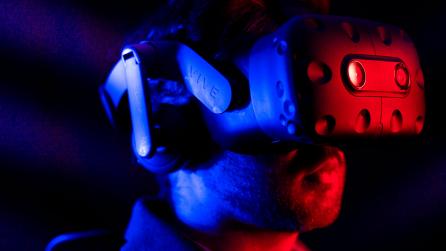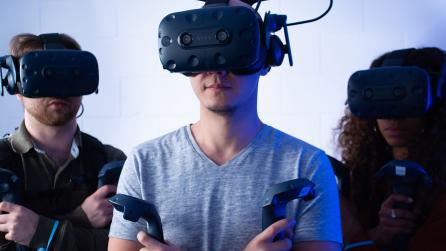How the AR Cloud will transform immersive technology
Foundry Trends spends a great deal of time looking at immersive technologies and exploring the factors that could lead to the holy grail of a ‘mass consumer adoption'.
For Augmented Reality (heralded as the closest of the mediums to this nirvana) the advent of 5G and advances in mobile phone technology are likely to play a critical role.
But the most significant development of all for driving AR adoption will be the AR Cloud.
What is the AR Cloud?
The AR Cloud is a real-time 3D (or spatial) map of the world, overlayed onto the real world.
It enables information and experiences to be augmented, shared, and tied to specific physical locations to occur and persist across apps and devices.
You'll soon see companies create and develop their own custom versions (the "Magicverse" from Magic Leap, for example) that will allow them to market various unique features and approaches.
In essence, they'll all do the same thing: connect data in the cloud to mobile handsets that will allow AR devices to become the gateways for our avatars in this new landscape of reality layered with virtual interactive information.

Why is it going to be transformational?
Simply put, the AR Cloud will be huge because it will be extremely lucrative.
From connectivity providers offering the service bundled in with your wireless package (or offering it as a separate, standalone subscription), to in-app AR Cloud purchases, a substantial new stream of revenue is set to be opened up.
And a whole ecosystem of related business will spring up alongside it: there are already companies, like Cognitive3D, designed to provide detailed analytics focused on how users in AR operate.
For developers, the emergence of a significant AR cloud platform will be a huge boon: a service like Uber could overlay a button on a street which users could press to call a cab.
Or you could overlay a 'Buy Tickets' button on top of your physical theatre show poster for users to purchase seats.
As an idea of where this future could lead, think about the eye-popping digital and hyper-personalized adverts that pervade scenes in films like Ghost in the Shell or the short film Hyper-Reality by Keiichi Matsuda.
Whether or not this vision of the future is appealing (or whether it will ever go that far) is another matter.
Walled off or opened out?
We're a few years off from an all-encompassing AR Cloud that inter-connects everything, of the type depicted in the films mentioned.
In the short-to-mid term, because of the amount of revenue AR Cloud will generate, we're likely to see a number of siloed AR Clouds spring up, rather than a single all-encompassing one that seamlessly connects everything.
Amazon will have an AR Cloud. Google will have one. And they will be different, with their own value propositions.
Some will likely opt for a freemium approach, exchanging the service for personal data used to serve up ads.
Some will be wholly subscription-based, offering access for a regular fee.
And some will stick to the values bestowed upon us by the creators of the internet - freedom and openness.
Firmly in the 'free and open' camp, a number of voices speak in favor of an open-sourced framework for AR Cloud.
Organisations made up of AR developers and software vendors such as the Open AR Cloud Association (OARC) are the equivalent of the VFX industry's Academy Software Foundation (ASWF).
Their mission is to drive the development of open and interoperable AR Cloud technology, data and standards to connect the physical and digital worlds for the benefit of all.
An admirable remit, and a common sentiment in developing technology spaces, the OARC focuses on "protecting and preserving our individual and collective freedoms, privacy, dignity and opportunity".
Of these aims, the one we anticipate resonating most with consumers - and the dominating factor that determines which AR Cloud they use (outside of cost)- is likely to be protection of privacy.
Security will be king
Think about the recent news that Amazon listens to anonymized user audio clips harvested from Alexa devices, for the purposes of improving the AI assistant's capabilities.
The tone of press coverage has understandably been one of concern.
But how much greater would that concern be if the data at risk of compromise was from smart glasses?
We're talking about a future world in which the vast majority of your interactions take place through the lens of a wearable, camera-equipped device.
A device that constantly tracks your location and keeps tabs on your purchases throughout the day (much like a current smartphone), but which crucially can also use eye-tracking technology to literally see what you're looking at.
Users are going to want gold-plated reassurances that the AR Cloud platform they use won't access and sell the data being captured from your wearable camera.
They'll also want to know that human employees aren't being allowed to peek through your camera while you're in your living room (or bedroom).
That means ultimately, the currency that will carry the most weight in this age of AR Clouds is trust.


